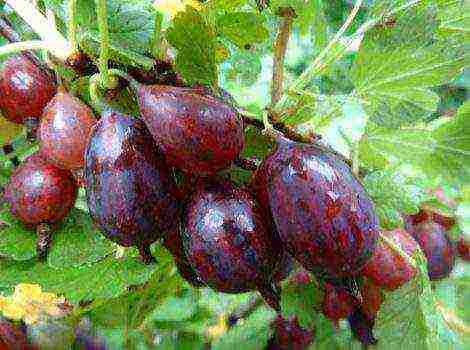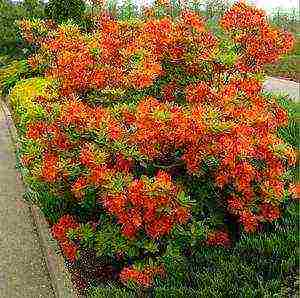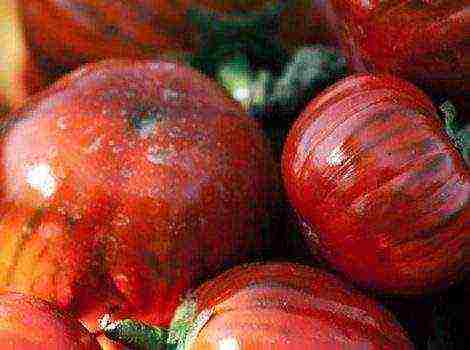Content
Altai honey is considered one of the most environmentally friendly and healthy varieties. This is due to the place of collection of pollen and nectar - Altai is not affected by the negative impact of industry. There are different types of Altai honey: mountain, taiga, field and meadow honey, let's talk about them in more detail.
Taiga
When making taiga honey, bees collect nectar and pollen from taiga grasses, currants, blueberries, lingonberries, sow thistle, raspberries, angelica, etc. Its color varies from yellow to brown, can have a red and coffee tint. The taste can be described as rather sweet, herbal notes are well felt, the smell is multifaceted, rich.
The product from taiga herbs has a viscous and viscous structure, 100 g of the product contains 316 kcal. It is harvested throughout the summer season. From the moment of collection to crystallization, a little more than one month passes, after which the substance becomes fine-grained.
The taiga honey is polyfloral (bribes from several plants) and belongs to the valuable, highest grades. It does not contain a huge amount of useful mineral compounds (potassium and iodine predominate), vitamins, amino acids and enzymes. The chemical composition may change during the harvest season due to the flowering period of the individual plants used.
Apiproduct has a bactericidal, analgesic and anti-inflammatory effect. And given the pristine and virgin nature of nature, useful qualities are doubled.
Field
This is the most common variety of Altai honey, the fields are rich in numerous flowering plants, while the harvesting period begins almost in early spring and ends only in late autumn. Bees take bribes from the following plants: dandelion, bell, sage, chamomile, thistle, thistle, etc.
Field honey is famous for its rich floral honey taste and aroma. The color can be from light yellow to amber. The crystallization process is quite long, but by winter the product is most often already candied. Its composition is balanced, it is saturated with various vitamins and minerals from the herbs used, as well as bee enzymes.
Mountain
Mountain honey has a dark color, it is brown, almost black, red and yellow shades are allowed. Having tasted it, you will feel a luscious slightly bitter taste, and the aroma is as strong as from a bouquet of fragrant flowers.
Collect mountain honey from late spring to mid-summer, Plants for bribe: chestnut, acacia, clover, lavender, linden, St. John's wort, etc. The product is quite liquid, has a long crystallization process, up to three months. Contains 284 kcal per 100 grams of substance.
A distinctive feature of the chemical composition is the presence of tannins. In mountain honey, vitamins of groups I, PP, C, E prevail. Micro and macroelements, acids, proteins and carbohydrates are present in sufficient quantities.
Mountain honey is highly valued in the fight against colds due to its powerful antibacterial effect. It enhances immunity, restores strength, eliminates inflammatory processes.
Lugovoi
They begin to collect meadow honey in the spring, and finish only in the fall.Tricks performed with a plurality of meadow plants are:.. Thyme, clover, sage, St. John's wort, caraway, chicory, cornflower, oregano, dandelion, etc. Depending on prevailing plant honey-color light can be saturated or golden amber.
Flavor product characterized by saturation, for example nutty flavor. After saccharification sweetness becomes beige hue with fine crystals. The aroma remains intact - fragrant floral-fruity. In 100 grams of product may contain 314-400 kilocalories. The chemical composition of meadow honey is rich in a variety of useful components and highly similar to human blood plasma.
Application of Altai honey
Apiprodukt Altai promotes rapid healing of burns, disinfects wounds, abrasions and cuts. Regular use of substances in food will make your nerves of steel and a wonderful mood. It is used for the following health problems:
- influenza, SARS;
- upper airway disease;
- intoxication;
- irregularities in the digestive tract;
- depression, stress and others.
Since ancient times, varieties Altai honey are used to treat a variety of diseases, as well as to prolong life and rejuvenation. Its external use is suitable for the renovation of the epidermis, removing scars on the body. Masks and balms for hair apiproduktom truly able to do wonders.
Thanks to a rich and lasting fragrance Altay honey is commonly used in cooking. It is added to meat dishes, pastries and desserts, often used as an additive to the porridge, pancakes, yogurt.
Recommendations for use
Altai honey does not like high temperatures, so heat treatment is categorically contraindicated for him. When the temperature rises above 50 degrees all healing properties disappear and hitherto only medicinal sweetness becomes tasty and fragrant dessert.
It is advisable to mix the honey with other healthy foods is nuts, fruits, vegetables and so on. E., Check for allergies before using the substance.
Contraindications
Contraindications include children up to 2-3 years old and is allergic to bee products. It is not recommended to consume large quantities of honey for people with obesity and diabetes. In the last months of pregnancy with caution and only eat nectar in prophylactic doses - more likely to develop an allergic reaction in a child.
Shelf life
In order to ferment the product does not need to store it in a vacuum container at a temperature of 12-20 degrees. Ideal glass jar or other food container. It is important to prevent moisture from direct sunlight the product. In such circumstances, Altay honey will be helpful for 12-15 months.
A distinctive feature of the Altai honey - it poliflernost and long crystallization time. The taste of nectar bees without a very pleasant floral acidity. Perhaps the presence of astringency and bitterness even. In appearance the product is light to amber. After saccharification acquires a fine-grained structure, it has a bright intense flavor. The product varies by species, and various honey plants are used for each creature.
The quality of the nectar undoubtedly affects the place of his collection - untouched by civilization Altai.
Altai honey is highly regarded in the community of beekeepers. The nectar contains a complex of vitamins and minerals necessary for human health. With regular use of medicinal sweets you forget about the cold, depression and many other diseases.
Honey ... Healing Altay honey. In this short phrase is literally a vast space enclosed many species of this amazing bee product. Many gourmets, dieticians, connoisseurs of folk medicine and cosmetology are well known as a visually attractive jars of honey Altai.Pot-bellied glass jars hide in themselves a transparent or thickened viscous liquid of all kinds of shades - from light amber (or even white) to rich brown tones, with a delicate delicate aroma of many Altai flowers.
But if you are just going to buy natural Altai honey and do not know what to opt for, be sure to read this article. We will tell you what types of Altai honey are and how they differ from each other.
How to distinguish varieties of Altai honey at the place of collection?
Altai is a land of amazing natural purity and diversity. In our region, the areas are very different in their zonal and landscape characteristics. Based on the location in which the apiary stood, such groups can be distinguished (each of which includes several varieties of honey):
- Altai field honey. It is collected mainly in the steppe and forest-steppe areas. This is a very common and fairly affordable variety of honey.
- Altai meadow honey. Collected by bees from wild plants of plain and alpine (then we are talking about a variety of mountain honey) meadows. Such honey is more difficult for beekeepers to collect than field honey. Accordingly, it is received less, and it is valued higher.
- Taiga honey. Elite honey with amazing properties and one of the most wonderful aromas. It is collected in apiaries located in taiga zones, many of the melliferous plants for such honey grow only in the collection area. This makes many varieties of taiga honey inimitable and unique in their composition.
- Mountain honey. It is considered one of the most elite and expensive varieties of Altai honey. The value of this honey is both in the amazing honey plants, the nectar of which serves as the basis for honey for bees, and in the complexity of the honey collection itself. Apiaries in highlands require great skill and patience of beekeepers. Accordingly, there cannot be a lot of mountain honey in terms of volume - it is important to always remember this and avoid possible "honey" fakes.
How are honey varieties divided by honey plants?
Altai (and any other) honey differs from each other by such an important characteristic as the number of species of honey plants, from which each specific type of honey was obtained. If to obtain honey bees collected nectar from one (or mainly one) plant species, then such varieties of honey will be considered monofloral, or monofloral (from "mono" - one and "flora" - flower). The name of honey is then given by the honey plant: melilot honey, buckwheat honey, angelica honey, acacia honey, raspberry honey, etc.
If honey is obtained from pollen and nectar of many plants, then it is classified as polyfloral, or polyfloral (from "poly" - many and "flora" - flower). So, for example, the Altai meadow forbs is honey collected from all plants of a plain meadow nearby from the apiary. Forb honeys may differ in time or place of collection (May forbs, meadow forbs, field forbs, etc.)
What else should you know about Altai honey?
Each honey has organoleptic (i.e. taste and aroma) characteristics. When choosing honey, pay attention to what notes of taste and smell are characteristic of this variety (for example, buckwheat honey has the property of a pleasant "feathery" in the aftertaste, and sweet clover honey enchants with its vanilla note in the aroma). In addition, all varieties of Altai (and not only) honey tend to crystallize after a certain time after collection. In the description of honey, it is usually indicated how long after harvesting it will crystallize and what it will be in a thickened state (fine or coarse crystalline, resinous, slurry or fat-like, etc.). It is important to know this characteristic in order not to buy a fake honey variety.
So which Altai honey is considered the best variety?
Choosing honey, many people certainly want to buy the best Altai honey.But what is he - the best? There is probably no definite answer to this question. It is important to remember that depending on the type of honey, it will have a different taste and aroma, as well as differ in the set of its useful properties. Therefore, deciding to buy Altai honey, be sure to read the description of the variety that you liked (or write to us) so that your purchase is not only tasty, but also very useful for your health and longevity!
Happy shopping everyone!
Spicy and tart Altai honey is valued for its medicinal properties. It is produced by bees collecting nectar from medicinal plants in Altai.
Unique natural environment ↑
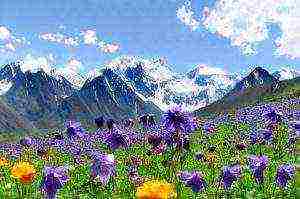 The most delicious and life-giving is natural honey collected in ecologically unpolluted natural areas. Altai nature is not subject to the destructive influence of industry. The region has a mild climate, favorable conditions for the growth of medicinal herbs and fragrant flowers. Therefore, the nectar collected by bees in such conditions has amazing properties. The local flora combined Mongolian, Kazakh and Siberian plants. Mainly Central Russian bees work on their pollination and honey collection.
The most delicious and life-giving is natural honey collected in ecologically unpolluted natural areas. Altai nature is not subject to the destructive influence of industry. The region has a mild climate, favorable conditions for the growth of medicinal herbs and fragrant flowers. Therefore, the nectar collected by bees in such conditions has amazing properties. The local flora combined Mongolian, Kazakh and Siberian plants. Mainly Central Russian bees work on their pollination and honey collection.
Product value ↑
The mountainous region has the most varied and rich honey plants. Bees collect nectar from angelica, raspberry, mint, sage, sweet clover, meadowsweet, willow-herb. Forming the base of honey, these herbs impart beneficial and truly miraculous properties to it. In complex therapy, Altai honey effectively copes with insomnia and headaches, treats ulcers, gastritis, liver diseases, actively fights respiratory diseases, and helps with vegetative-vascular dystonia. Honey receives positive reviews as a means of raising immunity.
The product contains nucleic acids, fructose, sucrose, vitamins, ash, minerals. By using this natural product often, you will improve metabolism, strengthen the nervous system, and normalize the work of the cardiovascular system. Altai honey is recommended to use for wound healing and antibacterial action.
Main characteristics ↑
The common name for Altai honey is different types of product (white, buckwheat, herbs, taiga, etc.). Each species has inherent only to him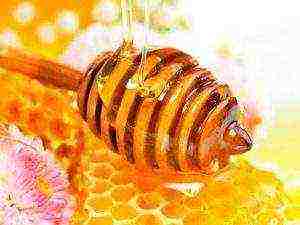
- Colour;
- properties;
- consistency;
- taste;
- aroma.
An important feature of bee nectar is the ability to slowly crystallize. The level of biological activity of the product differs depending on the color. White honey is less active than darker types. The color palette is rich in yellow, green, ocher, brown shades.
Secrets of taiga nectar ↑
Altai taiga honey is considered one of the rarest varieties. Bees are working on its creation, collecting nectar in the natural environment of the taiga. Its composition is multifaceted, and its properties are invaluable. Taiga nectar received excellent reviews as a means for removing toxins, stabilizing pressure, treating heart and anemia.
In composition, it resembles an airy aromatic cream of a slightly greenish color. Useful properties are appreciated in cosmetology: honey is used as the main component for the preparation of masks for the face and hair, it is used to make a bioactive cream for aging skin. In pharmacology, the components are used for the preparation of healing and antibacterial ointments.
Varieties ↑
Depending on from what honey plants, from what area and at what time the bees collect nectar, different types of honey are formed:
- mountain;

- serpentine;
- bruised;
- White;
- fireweed;
- buckwheat;
- angelica;
- sweet clover;
- katsy;
- sunflower;
- willow;
- clover;
- forbs.
- Buckwheat has a delicate floral scent. Natural buckwheat honey has a dark yellow color with a reddish tint, an amber brown tint is considered acceptable. Buckwheat honey crystallizes, acquiring a darker color. Contains a lot of protein and iron. It is very useful for low hemoglobin and low blood pressure.
- Acacia nectar bees collect from trees or shrubs of yellow acacia, which are rich in the mountainous region of Altai. The product has a delicate pleasant aroma. The crystallization process is slow. This natural nectar is popular among the people because of its unique taste and properties. Sometimes this species is called May. However, acacia honey is less valuable than herbs. The prefabricated composition is richer in vitamins and minerals.
- Forbs has the most positive reviews among buyers. Elderly people
 note the special taste, students and responsible employees constantly busy at work praise the invigorating and strengthening properties of the immune system, young mothers appreciate for the healing effect. And it is not surprising, because forbs contains about 300 names of useful substances. Altai's short summer forces plants to develop faster and produce concentrated pollen and nectar. Due to this, the herbs contain a loading dose of substances.
note the special taste, students and responsible employees constantly busy at work praise the invigorating and strengthening properties of the immune system, young mothers appreciate for the healing effect. And it is not surprising, because forbs contains about 300 names of useful substances. Altai's short summer forces plants to develop faster and produce concentrated pollen and nectar. Due to this, the herbs contain a loading dose of substances. - The mountainous region is rich in angelica, the nectar of which is collected by industrious insects in warm weather. Angelica honey has a unique brownish-red color. Has a characteristic aroma, after consumption there is a tickling in the throat. The natural composition has a viscous structure (cream), does not crystallize quickly.
- Sainfoin honey, white with a greenish tint, is considered elite, which has a spicy delicate taste. Crystallizing, it resembles a cream. It is obtained from the pink buds of sainfoin, which is among the first flowers to bloom. Reviews are therefore few in number for the species, since it is considered rare.
Gorny Altai, crystal clear lakes and meadow grasses - this is the place where the most delicious and healthy white, green, red and brown honey is born, melting in your mouth like a cream. It is recommended for use by weakened, small and respectable people as an effective supplement to the diet. If you have never tried the gifts of the Altai Territory, read the reviews and choose the most delicious honey.
Similar articles
Altai honey owes its special taste to the climate prevailing in the Altai mountains and rather ancient traditions of beekeeping. And even despite the fact that there are not so many vitamins in this thick product, the available set in combination with other enzymes and trace elements makes Altai honey almost a cure for all diseases.
What is Altai honey?
Absolutely transparent thick gruel with a light amber or slightly greenish tint is simply wildly popular, since it tends not to crystallize for a long period of time. After the process of thickening still occurs, such honey acquires a pleasant white color, remaining medium in density. Delicate taste, knocking down aroma and amazing aftertaste also play an important role in the formation of prices for products of this category!
What is the use of Altai honey?
Like every beekeeping product, honey contains a lot of useful properties, which fully explains its widespread use in medicine, cosmetology and cooking.
So, among the main "advantages" of this sweet sticky gruel:
- a significant increase in performance and endurance;
- strengthening the immune system;
- a noticeable improvement in metabolism;
- a positive effect on the work of the cardiovascular and nervous systems;
- good wound healing, antibacterial and antitumor properties.
Altai honey varieties by zones of creation
Due to the fact that the nature of Altai itself is quite multifaceted, the honey obtained by bees in its different areas can be classified as:
— Altai field honey.
Collected by laboring insects from the pollen of plants of the steppe and forest-steppe zones, such a beekeeping product is the most widespread here.
Such a product is valued somewhat higher than the previous version, and the “fault” is that it is difficult to collect nectar from wild honey plants.
Its wonderful botanical composition makes it one of the most popular and sought after.
The unique aroma and dozens of medicinal properties simply “extol” this honey over all other varieties. The reason for this is quite obvious and it lies in the difficulty of "obtaining" pollen in the highest meadows. That is why Altai mountain honey is so expensive.
Altai honey varieties by type of honey plants
Here, the variety simply does not occupy - the choice is so great that you will have to try for a very long time in order to select for yourself a couple of the most delicious options.
Such a product is notable for its color, which can range from pale yellow to more intense shades. The taste is very subtle, which is also characteristic of the aroma. Crystallization of acacia honey is very slow, and therefore you can use its healing properties for a long time.
As usual, such a product is quite specific in terms of smell and sugary taste. Despite this, the popularity of this brown mass is quite high, as it is rich in iron and proteins.
Collected from the Siberian plant of the same name, this beautiful light-colored honey has a good taste and a specific throat tickling. This honey has a good "bouquet" of vitamins and is very popular with customers. You can also meet it under the name Altai angelica honey... In addition to its rich healing properties, such a product has an interesting forest aroma, which is why it is often used in cosmetology.
One of the best varieties of honey is distinguished by its good taste, eye-pleasing shade and a long solidification period, after which it turns into a solid white mass.
— Altai honey from honeysuckle or white honey.
Since the latter practically does not grow on its own, but "prefers" to grow near the white acacia, and therefore the honey is not monofloral, but mixed - this only adds healing properties and new flavoring "zest" to the product.
Such a product is always very useful, and therefore expensive. Light honey of the Altai collection is also very tasty, therefore it is a permanent inhabitant of the counters.
It is a product of processing honeydew and honeydew of animal origin. Such a product is distinguished by its extreme viscosity and a very specific taste, which, alas, not everyone will like. But, if we are talking about the treatment of anemia, then you have to forget about your taste preferences.
In addition to the mentioned types of honey, you can also find mixed
flower honey
collected in different parts of Altai. Depending on the "filling" of such a product, it can have a different smell and taste.
In addition, among lovers of honey, such types are popular as:
— Altai sweet clover honeysmelling of vanilla;
—
Altai willow honey , characterized by a certain piquancy;
—
Altai honey raspberry , will evoke pleasant fruity notes;
—
Altai honey from sunflower reminiscent of ghee with a tart taste;
— Altai honey bruisedinteresting for its beautiful creamy texture.
Where to buy Altai honey?
Selling honey in the Altai Territory is quite an ordinary event, but you absolutely do not need to travel to distant lands in order to replenish supplies in your closet, because a lot of various offers can be found in almost every major city in Russia. And let you overpay a little, being in search of the best place where to buy Altai honey, but, in any case, it will be more profitable than trying to get this delicacy at the place of pumping.
Buying honey in Moscow
There are more than enough places for such purchases, and this, due to certain competition, will allow you to look not only for the most delicious honey, but also for the most acceptable price. Among the most popular outlets where you can choose several cans of viscous medicine are:
—
Honey Spas shop ... The range of products here is quite wide - you can buy different types of honey at a price of 450 - 600 rubles per kilogram. And also look after a wax moth or royal jelly, paying 350 or 700 rubles for 50 or 70 grams, respectively.
—
Altai store offers to make mainly online purchases, providing no less diverse choice - in different containers it will be able to satisfy all your requests. Prices here fluctuate on average from 650 to 1500 rubles per kilogram - it all depends on the exclusivity of the product.
—
Shop Siberian Power insists that even the sale of honey in the Altai Territory cannot be so profitable, because at this point of sale a kilogram of herb honey will cost you no more than 400 rubles.
— Longevity honey store, which specializes in product promotion of various regions of Russia, offers to buy Altai medok at an average price of 620 - 650 rubles per kilogram, although there are "lots" of 1000 rubles each.
Where to buy Altai honey in St. Petersburg?
The glorious city on the Neva is no less rich in shops selling Altai varieties of honey. So, very interesting suggestions are made by:
—
Shop Medoc , in which, depending on the variety, you can count on a price of 500 - 700 rubles per kilogram;
—
Shop Altai honey , a distinctive feature of which are low prices, because a kilogram of herb honey will cost 250 rubles;
— Shop Mishkin honey will surprise you with a variety of jars and barrels. The average cost per kilogram of such a product is 500 - 700 rubles.
Buying Altai honey in Novosibirsk
The most famous wholesale and retail suppliers of this beekeeping product:
—
LLC Honey Spas ... The price here is negotiated depending on the volume of the purchase, but on average, in retail trade, the goods are sold at a price of 500 - 600 rubles per kilogram;
— Sibarit LLC generally tempts with low rates of 350 - 400 rubles per liter jar of tart sweetness, which is about 1.2 kilograms.
Buying Altai honey in Barnaul
Here they have deployed their active activities to promote products of this type:
—
LLC Honey Spas ... The company specializes in literally everything that is somehow involved in the apiary, and therefore there really is something to choose from. As for honey, a kilogram here will cost from 320 rubles per kilogram;
— Shop Honey Land... The assortment of goods here is also diverse, although it is inferior to the previous version. If you are aiming at buying only honey, then the price of 400 - 500 rubles per kilogram should satisfy you.
In addition to shops, private sellers sell honey everywhere. But, here the situation is such that you cannot know for sure who is in front of you - a conscientious beekeeper or an ordinary speculator to whom “just to sell”, as they say. But, in any case, you have to pay, and therefore the decision to make too!
